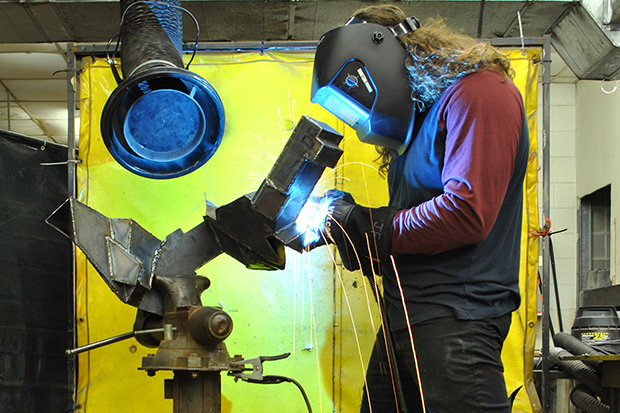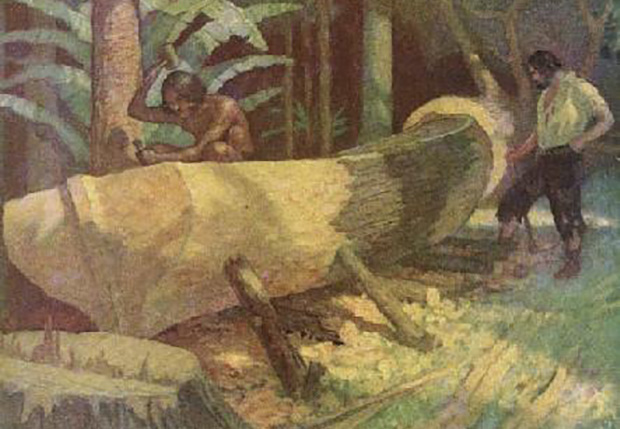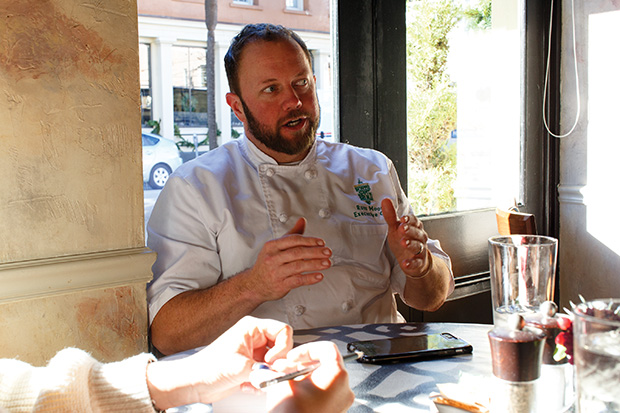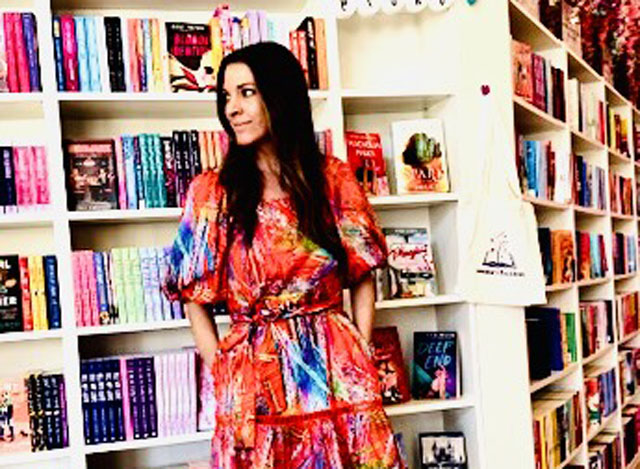The Making of an Artist
02 Jan 2019
The evolution of Jordan Fowler and his concrete abstractions.
By Leah Rhyne

It’s easy to connect with representational art. Paintings of people or landscapes are bound to elicit responses, drawing on our shared humanity as a similar starting point on the artist and consumer’s journeys. Much harder, then, is the job of an abstract sculptor like South Carolina native Jordan Fowler. While some of his work is representational, most of it is far more nebulous, far less easy to understand. Still, each work tells a story, an evolving tale that begins with the artist himself.
“I’ve always been an artist,” says Fowler. “It was something I picked up super early, and that luckily my parents cultivated. It was always kind of part of what made me…me. I’ve gone through all weird changes and styles with who I am, but art’s been the most consistent since I was three years old.”
The work reflected in his portfolio shows a student searching for what makes him…him. From self-portraits made of dollar bills to paintings that look transported from the Italian Renaissance to giant mosquitoes and octopi and massive metal conglomerations, Fowler is an artist who is always experimenting, always learning. That he recently relocated to Clemson to pursue graduate work as an artist is therefore no surprise. It’s simply the next step of his search to find what makes him tick.
Although his larger commissioned sculptures are what mostly pay his bills – pieces found throughout the Lowcountry at places like Yonder Field in Orangeburg and outside veterinary clinics in Mount Pleasant – lately it’s a collection of smaller concrete sculptures that are captivating Fowler’s imagination. He gets excited when discussing them, and that enthusiasm seems as boundless as his many styles.
“The most obvious thing about them is that they’re abstract,” he says. “There’s nothing super representational in them, but there are definitely subtle cues in the way they’re formed. The smaller concrete pieces are really a critique on consumerism.”
He’s happy to expound further. “Those forms are actually the negatives of Styrofoam. I take packaging that comes from electronics or appliance boxes, I configure them together, and I pour concrete into them and pull the Styrofoam out. What’s left are abstract objects that are a conglomerate of all of our stuff.”
He calls them the average of all our items mixed into one, these abstract objects. They’re fossils of consumerism, stone pieces brushed in metallic, footprints of our modern age. “They can stand alone as abstracts, and they’re meant to be cryptic/distressed/aged-looking,” says Fowler. “They definitely have a sci-fi vibe to them. If someone came and dug up what remains of all of our crap a hundred years from now, these would be the fossils they’d find of all our stuff.”
That’s the sort of thought that goes into Fowler’s work, as he experiments his way through one object, one style to the next. They all have a working class, steel-city vibe, again reflecting the less obvious bits of Fowler. When asked about transitioning to being a “full time artist,” he laughs. “You can always be a full time artist and just be super-poor,” he says, then outlines the various jobs in the artistic world he’s taken to keep himself afloat while he sculpts.
He’s been a preparator for the Halsey Institute of Contemporary art – and for those who don’t know what that means, the preparator is the person who coordinates the setup and breakdown of every exhibition that comes through a gallery, working with the artist and shipping companies and hanging the art on the gallery walls – which led to a steady stream of income in Charleston as multiple galleries used him to hang art for years. Then there was the dream job, managing the sculpture studio at the College of Charleston, where Fowler completed his undergrad work. That job had a timeframe assigned to it from the get-go – the CofC faculty knows it’s a dream job. Fowler describes it with a laugh. “I was like a TA and running the studio. I’d spend half my day teaching and making sure no one dies, that everybody has all their limbs. But I also got to use it as my personal studio. I made a ton of work while I was there. Putting a time-limit on the job was really wise of my professors. They said, ‘If we don’t force you to leave, you’ll stay forever and you won’t go do greater things.’ And they’re right. I didn’t want to leave. So they give you three years, and then you have to go.”
Hopefully grad school will mean even greater things for Fowler. With commissions for his large, outdoor pieces keeping him busy, it’s hard to imagine anything but a progression of style and substance as Fowler finally finds exactly what makes him…him.












